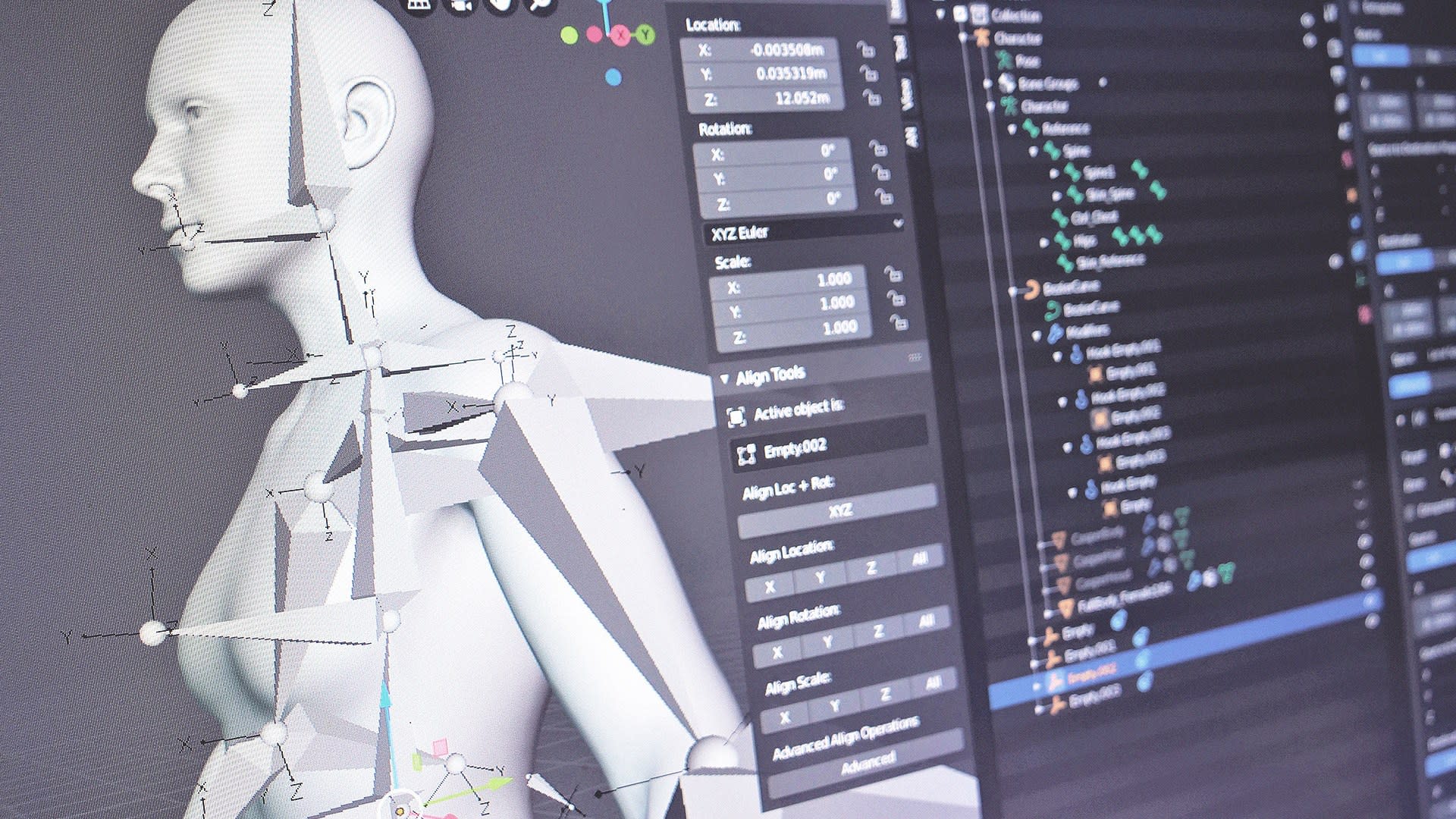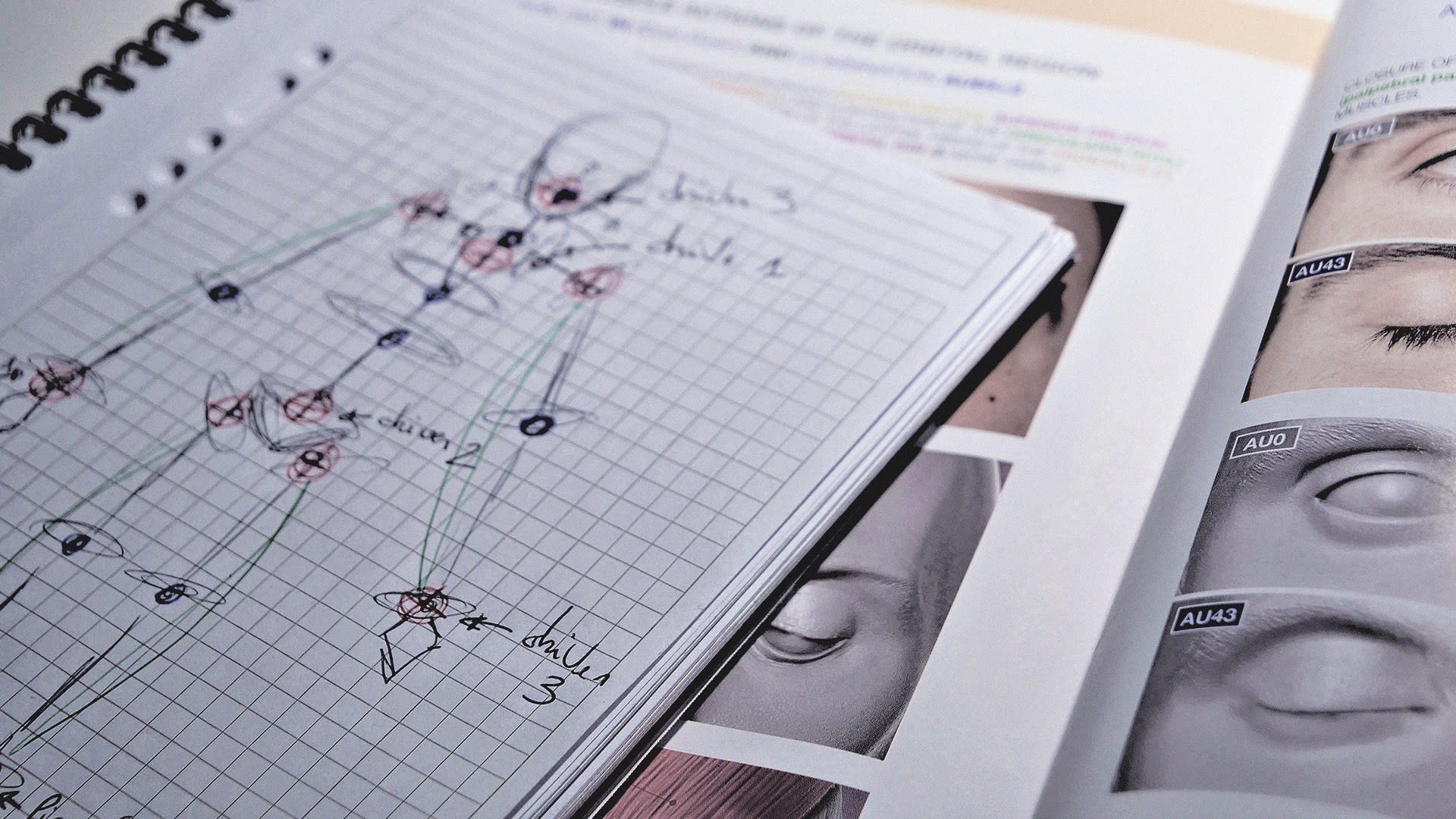When asked to explain her work, which is still largely unknown to the public, Amandine readily compares herself to a puppeteer. Because her role is to create the skeleton and the joints of the video game characters, an essential work for the animators to give them life. Amandine gave us the inside scoop on her job and her secret technique to make her characters dance and work on their flexibility.
Amandine, 27 years old, has long been passionate about drawing and animation. After studying graphic design and advertising, she joined the Aries school in Lyon and took a 3D training course. It was during a presentation of the different jobs related to her course that she discovered rigging, a job she has now been doing for two years at Ubisoft.
I am: a rigger at the Paris Ubisoft Studio
I like: I like cinema a great deal and lately The Bears' Famous Invasion of Sicily, a very beautiful, animated movie.
I don’t like: Horror movies, even if it's obvious that it's a fake, I hate being afraid!
THE RIGGER'S JOB IS NOT WELL KNOWN TO THE GENERAL PUBLIC. TO EXPLAIN IT YOU LIKE TO SAY THAT YOU ARE A PUPPETEER OF VIDEO GAME CHARACTERS, CAN YOU TELL US WHY?
AMANDINE PIELAWSKI - In the team, to support the technical direction, there are two riggers. In fact, the characters the artists make are a bit like rag dolls. I'm in charge of adding the pieces of wood and the wires that will allow the animators to give life to the characters. We put the main joints on, like one “bone” for the upper arm and another for the lower arm for example. In the end, the character moves this way or that way because the rigger allows him to do so, because they placed a bone and a joint in that place.
And to simulate the effects of muscles, we add additional “bones”, stakes in a way, which will pull on the outer layer of the character and allow the biceps to swell when it is requested.
HOW DO YOU BECOME A RIGGER? IS THERE A SPECIFIC PATH TO FOLLOW?
A.P. - I think the guiding principle is to want to create something. I wanted to give life to a creation with drawings. I started by studying advertising and graphic design, but the environment did not appeal to me at all. I went to a school in Lyon, which was called Aries at the time, to take a general 3D course. During a class, I discovered rigging, and it was love at first sight. I discovered a real passion for the technical aspect of animation, and the logic behind it. I had the opportunity to do an internship in the video game industry, then to get my first contract at Quantic Dream to work on Detroit: Become Human. I was already a gamer at that point. When I was younger, I already played GTA: San Andreas and Pikmin, and I really enjoyed discovering the video game world because it's very different from animation. In an animated movie or cartoon, you don't have to do what you don't see. In a video game, it's real time and your creation must work in 360° and all the time.
CONCRETELY, CAN YOU TELL US ABOUT YOUR TYPICAL DAY AS A RIGGER?
A.P. - It's complicated to answer this question because no two days are really the same! But there is always a guiding principle: we have a problem, like wanting our character to move in a certain way. I run tests, set up the skeleton, and make adjustments when I attach it to the outer layer. Because a male character and a female character will not have the same characteristics, especially in terms of the face.
It really involves working on communicating well with my colleagues, both with the animators and the character artists. Because for example, if I make a character bend his arm, but there is not enough material, “skin”, to follow, the result will be strange and very stretched. It's like drawing on an elastic material and pulling on it so the drawing would no longer make sense. So, I work with the character artists to correct these aspects. Fortunately, because I have a generalist background, I am more aware of the needs of my colleagues and can try to anticipate them.

HOW DO YOU MAKE SURE THAT THE MOVEMENTS, THE JOINTS OF THE CHARACTERS, REMAIN REALISTIC AND SEEM NATURAL?
A.P. - Whenever I have to deal with a skeleton, I take inspiration from what I have around me. If I'm going to do a skeleton that involves the use of a backpack, I'll first wear a backpack myself, or ask a colleague to do it, and observe the movements one has with it and how the body reacts. And once I have my skeletons, I make the characters do a gym workout with pre-recorded animations, to test the movements. If there is a problem, it is immediately obvious. I like to test the characters in a dance animation in a disco. It's very funny to see a big guy like Nomad (main character from Ghost Recon: Breakpoint, NDRL) dancing with his gun. To test their physique, I make them dance!
WHAT HAS BEEN YOUR BIGGEST CHALLENGE SO FAR AT UBISOFT?
A.P. - I think my biggest challenge was correcting every single character's face in Ghost Recon Breakpoint - and there were over 150 of them! In fact, we have a basic facial animation, which must fit both male and female faces. So, I had to adapt them to fit, both in terms of gender and morphology. In some cases, on some faces with smaller eyes, the eyelids closed too much and turned over on themselves. I also had to correct the smiles, especially the kisses, because the skin was stretching too much, and it made the lips too big.
DO YOU HAVE ANY SPECIAL MEMORIES SINCE YOU STARTED WORKING HERE THAT YOU WOULD LIKE TO SHARE WITH US?
A.P. - I remember the day I went to Quebec to meet with the Assassin's Creed Odyssey team and discuss with them the technology they have in place in terms of rigging and the vision that we are putting in place at Ubisoft on this level. And although we don't all have the same constraints from one game to another, from one studio to another, I really liked this idea of having a common block, which we adapt according to our respective specificities. It was really nice for me that, just three months after I arrived, I was sent to another studio to learn things. And even though I'm still a bit of a “novice” (I've been at Ubisoft for two years now), I can bring my expertise on the rig, my knowledge, and suggest new things that are often implemented. I've always been allowed to test and experiment, and I think that's really cool.
